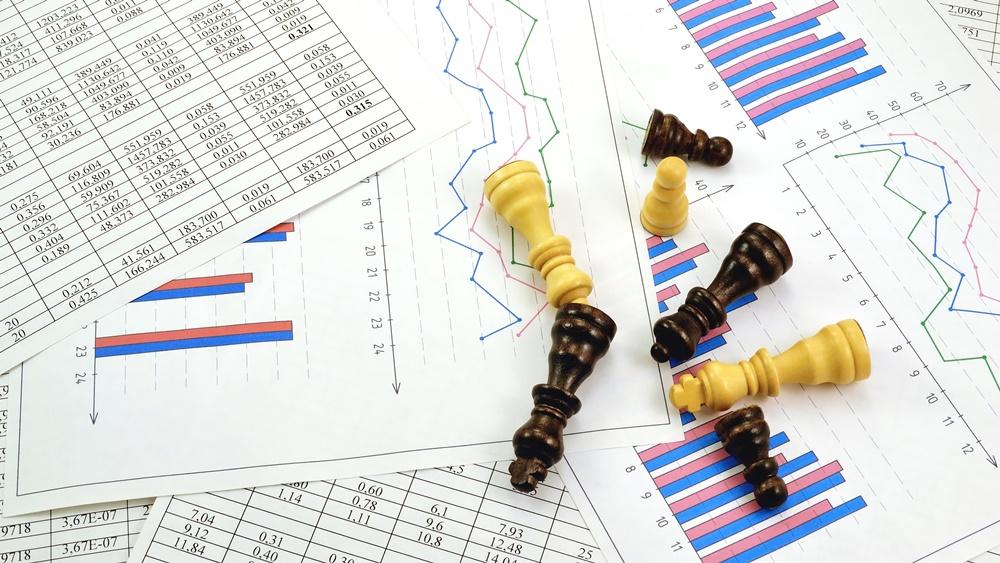
Chess Ratings - How They Work
Like it or not, we ALL have a chess rating. You may not care at all about your rating, or you may be whining every time it goes down in the slightest. You might be someone who plays a game a year, or someone who plays 1,000 a day. Still, there is a number out there that represents how well you play chess. Well, that's the theory, anyway.
To understand chess ratings you have to understand two things: #1 - that you have a TRUE rating that perfectly represents your strength of play, and #2 - that that TRUE rating will never be known and so we have to use statistics to get as close as possible to the truth. I'm writing this article in response to many people who ask about ratings and need a simple explanation of how they work. (I only know about all this because of a recent super-in-depth statistics course I took and my research in building Chess.com!)
There are two main rating systems, and each one has its merits.
The Elo System (used by the United States Chess Federation, FIDE, and many other online chess sites) is popular for two reason - it has been around for a long time, and it is simple. The idea is this: given two chess players of different strengths, we should be able to calculate the % chance that the better player will win the game. For example, Garry Kasparov has ~100% chance of beating my 4-year-old daughter. But he may only have a ~60% chance of beating another Grandmaster. So when playing that other Grandmaster, if he wins 6 games out of 10, his rating would stay the same. If he won 7 or more, it would go up, and 5 of less, his rating would go down. Basically, the wider the spread of the ratings, the higher percentage of games the higher rated player is expected to win. So to calculate a person's rating after playing a few games you calculate the average ratings of his opponents, and then how many games he was expected to win, and then plug it into a formula that spits out the new rating. Simple enough. Well, it turns out, that is maybe TOO simple.
The Glicko System (used by Chess.com, the Australian Chess Federation, and some other online sites) is a more modern approach that builds on some of the concepts above, but uses a more complicated formula. (This only makes sense now that we have computers that can calculate this stuff in the blink of an eye - when Elo created his system they were doing it on paper!) It is a bit trickier than the Elo system, so pay attention. With the Elo system you have to assume that everyone's rating is just as sure as everyone else's rating. So my rating is as accurate as your rating. But that is just not true. For example, if this is your first game on Chess.com and you start at 1200, how do we really know what your rating is? We don't. But if I have played 1,000 games on this site, you would be much more sure that my current rating is accurate. So the Glicko system gives everyone not only a rating, but an "RD", called a Rating Deviation. Basically what that number means is "I AM 95% SURE YOUR RATING IS BETWEEN X and Y." (Nerd Fact: In technical terms this is called a "confidence interval".) If this if your first game on Chess.com I might say, "I am 95% sure that your rating is somewhere between 400 and 2400". Well that is a REALLY big range! And that is represented by a really big RD, or Rating Deviation. If you have played 1,000 games and your rating is currently 1600 I might say "I am 95% sure your rating is between 1550 and 1650". So you would have a low RD. As you play more games, your RD gets lower. To add one extra wrinkle in there, the more recent your games, the lower your RD. Your RD gets bigger over time (because maybe you have gotten better or worse over time - I'm just less sure of what your actual rating is if I haven't seen you play recently). Now, how does this affect ratings? Well, if you have a big RD, then your rating can move up and down more drastically because your rating is less accurate. But if you have a small RD then your rating will move up and down more slowly because your rating is more accurate. The opposite is true for your opponent! If they have a HIGH RD, then your rating will change LESS when you win or lose because their rating is less accurate. But if they have a LOW RD, then your rating will move MORE because their rating is more accurate.
I wish there was some simple analogy to explain all this, but there isn't. It all comes back to this: you have a theoretically exact chess rating at any given moment, but we don't know what that is and so we have to use math to estimate what it is. There are really smart people out there who work on this stuff for a living, and at the end of it all we get to put their proven methods into our code so that we can all enjoy knowing what little numbers next to our name we deserve.
If you want to read more, check out these articles (WARNING - SEVERE NERD CONTENT AHEAD):
- The Glicko System by Professor Mark Glickman, Boston University




